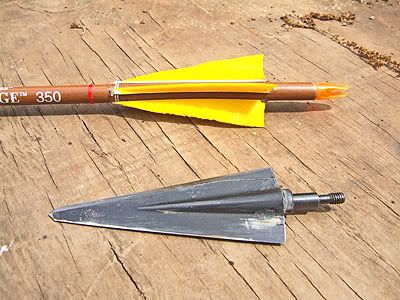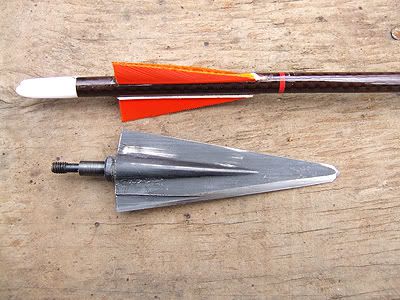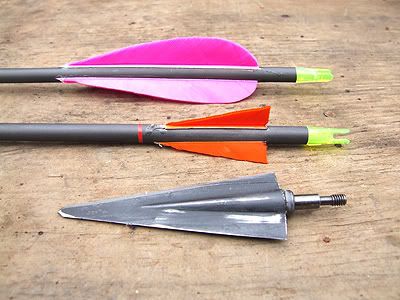Home › Forums › Friends of FOC › A long look at fletching and EFOC › Reply To: A long look at fletching and EFOC
Steve,
This is an area of EFOC and Ultra-EFOC arrow design that needs to get more attention from hunters. There are some big benefits, and I’ve migrated to using the tiny A&A fletch on my serious hunting arrows. Of course there’s the decreased drag in flight, with better trajectory and more retained arrow force downrange, along with less deflection in crosswind conditions, but that’s not what I find to be the biggest advantages. The biggest advantages are: (1) a clearly present reduction in noise in flight; (2) the tiny fletching is far less visible to game; and (3) there is a major wet-weather benefit. NOTE: Your shaft setup needs to be well tunded BEFORE you start working on minimum fletching required to stabalize your broadhead. Even at EFOC, small fletching won’t work well when the shaft’s dtnamic spine is not correct.
Wesley did some test shooting for me (I can’t shoot well enough at forty yards to hit those tiny target dots!). From his compound, we took 190 gr. Grizzly BH’s on a 26%-27% FOC setup with the A&A fletching. Shot them dry then soaked the fletching in a bucket of water for a full 30 minutes and, without even shaking the water off the fletching, shot again. At 40 yards there was absolutely no change in point of impact. I think a lot has to do with the stiffness of the low-cut fletching (which you can only get away with using if your arrow has very high FOC). Even after 30 minutes of soaking there’s no visible matting down of the fletching. Those shots were with untreated feathers – no form of add-on waterproffing whatsoever.
For any unfamiliar, here are a few photos of the A&A fletch. Their appearance does take a bit of getting use to. The red ring is the turbulator.
#1: With EFOC 0.5″ tall, 2.5″ four-fletch A&A works for my very poor quality finger release. Once I get a good Ultra-EFOC setup I may be able to go smaller.

#2: 0.5″ tall, 2″ three-flect A&A worked with mechanical release from Wesley’s compound. This is the fletching we water-soaked and tested.

#3: Compare the fletching surface area between the 2″ A&A and the 3″ parabolic cut fletching. When thoroughly water soaked the A&A still stabalized the broadhead’s flight; the 3″ parabolic didn’t.

#4: Looks starnge; works great!

Ed

